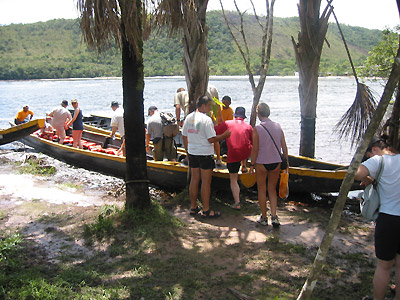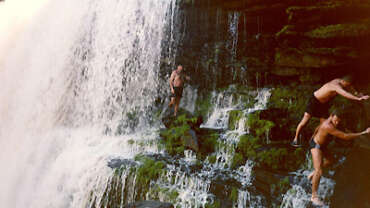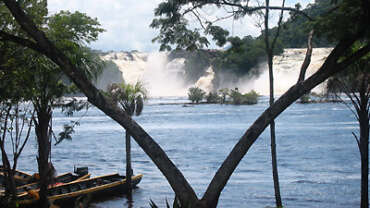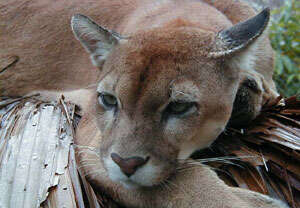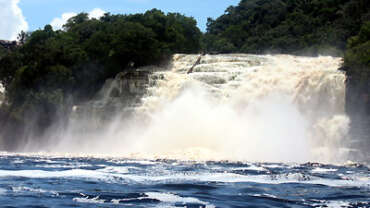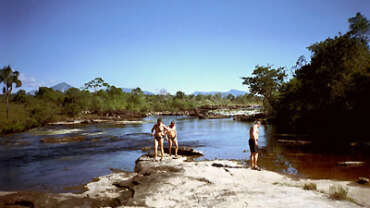Orinoco Delta
The Orinoco delta is a vast, intricate labyrinth of waterways weaving through a simmering jungle to carry the waters of the Orinoco to the Atlantic Ocean. The Orinoco Delta – the landmass now known as Delta Amacuro State – has formed over the course of thousands of years as the mighty river has deposited millions of tonnes of sediment into the ocean. Over the last century alone, some 1,000km² has been added to the delta, which continues to extend into the Atlantic at a rate of 40m per year over its entire 360km coastline. The Orinoco branches off into over 60 caños (waterways) and 40 rivers which diffuse through 41,000km² of forested islands, swamps and lagoons.
The Delta and its Wildlife
The delta is divided into upper and lower regions, west and east of the Caño Macareo respectively. This division is a consequence of the flood control program initiated in the 1960s; Caño Mánamo was dammed, reducing seasonal flooding in the north and making the land more suitable for cattle farming. There was, however, a cascade of knock-on effects in the region. The reduced water levels in the upper delta caused the region to become tidal, and water levels now rise and fall by 1-2m daily. In the dry season, salt water now moves further up the waterways, which has had a significant effect on the flora and fauna of the area and has forced resident Warao to relocate, seeking fresh water upriver. The lower delta, still under the influence of the Orinoco, is subject to flooding during the dry season, when water levels may vary by up to 15m. Since 1991, 331,000ha of the lower delta has been protected under Mariusa National Park.
A massive variety of habitats has arisen within the delta, both terrestrial and aquatic. Mixed tropical rainforest, dominated by towering palm trees, prevails over much of the terra firma, fostering a variety of flora including fruiting trees, orchids, bromeliads and arboreal ferns; the latter of which flourish in the moist air of the canopy. Grassland swamps and marshes brim with aquatic plants, and estuarine waterways towards the ocean are thick with mangroves. Throughout the delta, the caños are themselves hugely diverse in form. Wide channels break off into narrow rivulets, isolated pools and lagoons. Some, heavy with sediments are brown in color, others are black with tannic acids. Many are carpeted with vast floating meadows of water hyzcynths (bora) and grasses, slowly drifting along with the current.
Needless to say, the wildlife of the delta is also extremely rich and varied. Jaguar, puma, ocelot, red howler and capuchin monkeys, capybara, agouti, giant otter, manatee and dolphins are just a handful of the countless species of mammal that can be observed in their natural habitats. Among the extensive bird population are hoatzin, macaws, parrots, toucans, caciques, kingfishers, cormorants, egrets, falcons, hawks, harpy-eagles, weaverbirds and hummingbirds. There is also an untold number of amphibians, reptiles and fish species, including anaconda, boas, vipers, fer-de-lance, coral snakes, iguana, cayman, turtles, piranha, stingrays and catfish.
Tucupita
Tucupita, the capital of Delta Amacuro State, has a population of 80,000 and is the commercial center of the region. The quiet town grew up around a Capuchin mission settlement established on the Caño Mánamo in the 1920s. The dyke across the Mánamo, 20km upstream from Tucupita, provides the only overland link to the west. Tucupita is a good place to organize a trip into the delta, and a few hotels and restaurants are dotted around the town. The bus terminal in the capital has routes to all major towns and cities and there is also a private airstrip.
Climate
The average temperature is 26ºC and the air is humid, with an annual rainfall of 2,000mm. The rainy season is from May to December. The dry season is from January to March/April, and the waters are at their lowest in March.
Tourism in the Delta
Organized tours to the delta are becoming increasingly popular. Day trips can be arranged, but most trips encompass at least one night’s stay in the heart of the jungle. Accommodation varies from hammocks under wooden shelters to luxury camps with dining and bar facilities, private cabins, running water and electricity. The latter are constructed in the same style as the nearby Indian houses and blend in well with the surroundings. From the camps, tourists can take boat trips around the delta to observe the remarkable wildlife, hike through the jungle and visit Warao Indian families, some of which sell their artesania. The delta’s rich waters are excellent for fishing, especially for piranha and catfish, and some camps also offer night trips along the river to find cayman and other night prowlers. Tours to the delta can be arranged in most tour agencies around the country; Tucupita and Barrancas have several agencies specializing in delta trips. The main access points to the delta are Tucupita, Boca de Uracoa, Barrancas, La Horqueta and Volcan.
The Warao Indians
The Warao Indians – literally the ‘Canoe People’- are the native inhabitants of the delta. With a population of 24,000, the Warao constitute the second largest indigenous tribe in the country. Family groups reside in palafitos (wooden houses raised on stilts) along the banks of the river, and spend most of their daily lives in canoes fishing the nearby caños and hunting and gathering in the surrounding forests. Skilled craftspeople, the Warao build their palafitos and canoes from forest wood using traditional techniques, and, owing to increased contact with tourists, have also begun to carve figurines from balsa wood and to make necklaces, baskets and hammocks from the leaves and seeds of the ubiquitous moriche palm. The moriche palm, however, supplies more than just the basis for artesania. Otherwise known as the ‘tree of life’, the moriche provides the Indians with fruit, juices and a sweet pulp that can be made into a type of bread. Moreover, the trunk of the palm is used to cultivate a thumb-sized beetle grub, the moriche worm, a nutritious dietary supplement.
National Parks of the Orinoco Delta
Mariusa National Park
The lower delta, still under the influence of the Orinoco, is subject to flooding during the dry season, when water levels may vary by up to 15m. Since 1991, 331,000ha of the lower delta has been protected under Mariusa National Park.



